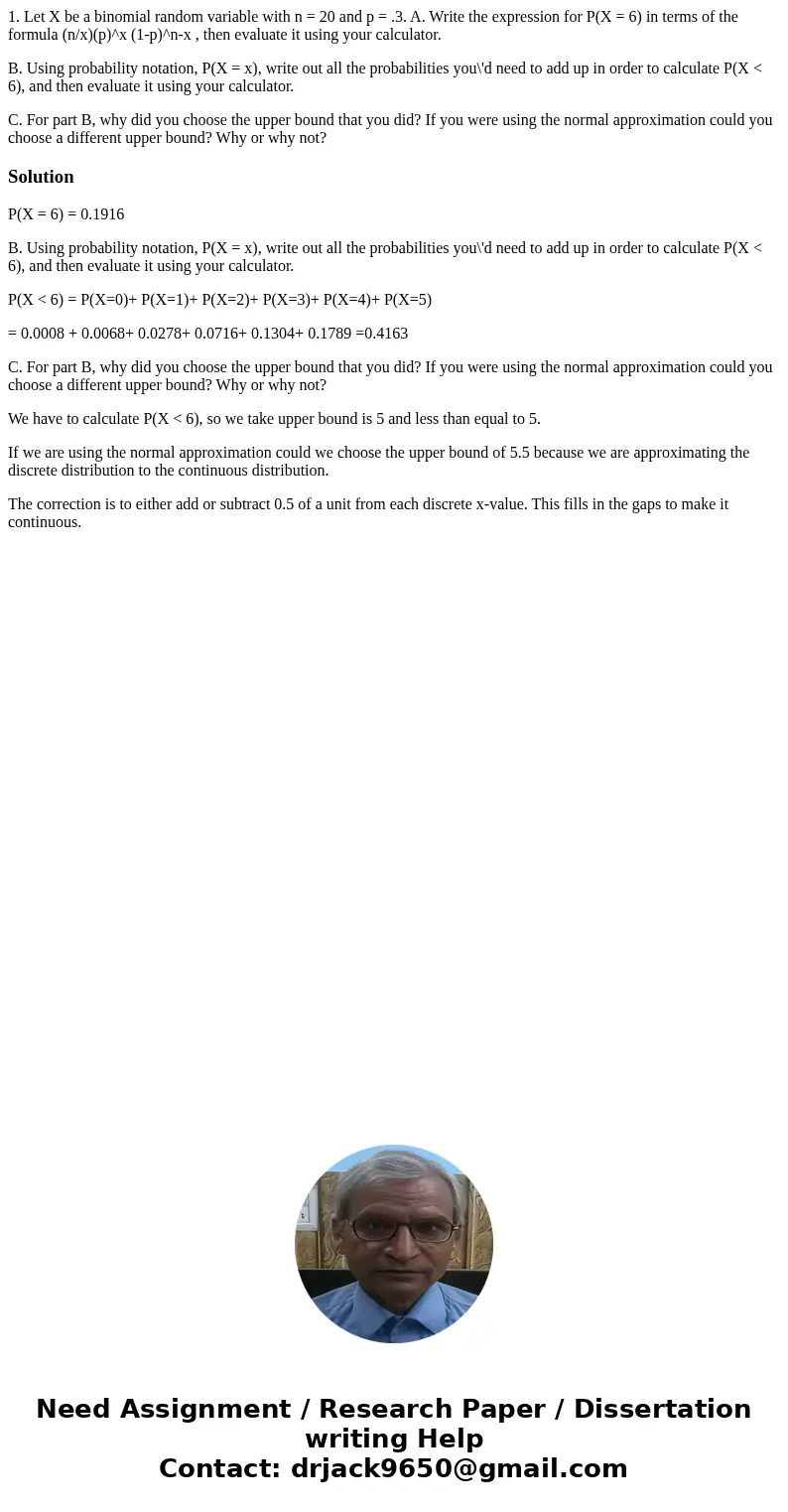1 Let X be a binomial random variable with n 20 and p 3 A
1. Let X be a binomial random variable with n = 20 and p = .3. A. Write the expression for P(X = 6) in terms of the formula (n/x)(p)^x (1-p)^n-x , then evaluate it using your calculator.
B. Using probability notation, P(X = x), write out all the probabilities you\'d need to add up in order to calculate P(X < 6), and then evaluate it using your calculator.
C. For part B, why did you choose the upper bound that you did? If you were using the normal approximation could you choose a different upper bound? Why or why not?
Solution
P(X = 6) = 0.1916
B. Using probability notation, P(X = x), write out all the probabilities you\'d need to add up in order to calculate P(X < 6), and then evaluate it using your calculator.
P(X < 6) = P(X=0)+ P(X=1)+ P(X=2)+ P(X=3)+ P(X=4)+ P(X=5)
= 0.0008 + 0.0068+ 0.0278+ 0.0716+ 0.1304+ 0.1789 =0.4163
C. For part B, why did you choose the upper bound that you did? If you were using the normal approximation could you choose a different upper bound? Why or why not?
We have to calculate P(X < 6), so we take upper bound is 5 and less than equal to 5.
If we are using the normal approximation could we choose the upper bound of 5.5 because we are approximating the discrete distribution to the continuous distribution.
The correction is to either add or subtract 0.5 of a unit from each discrete x-value. This fills in the gaps to make it continuous.

 Homework Sourse
Homework Sourse